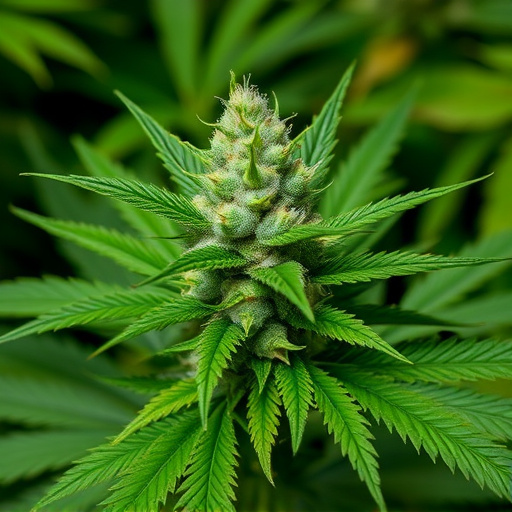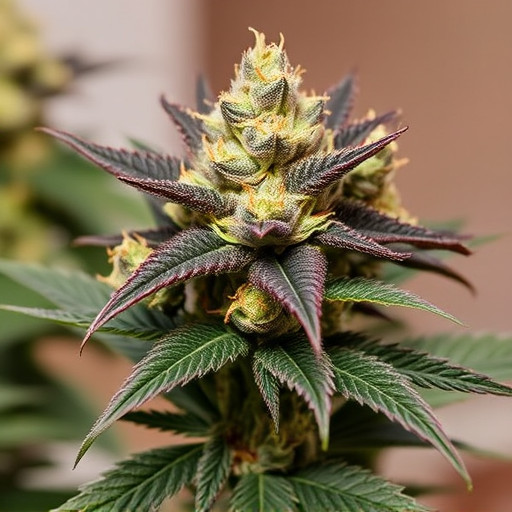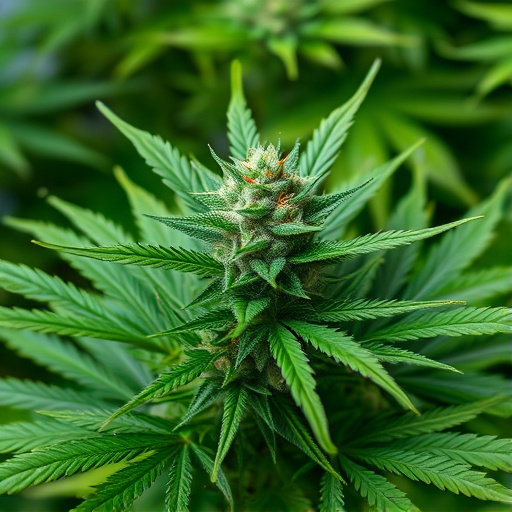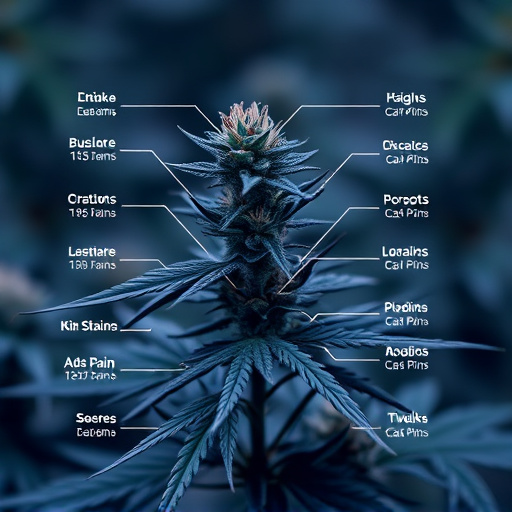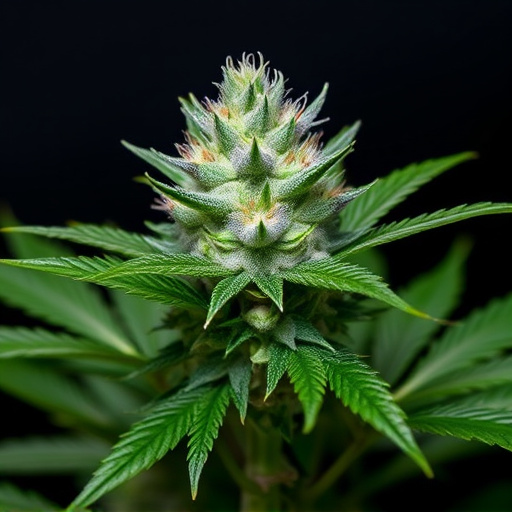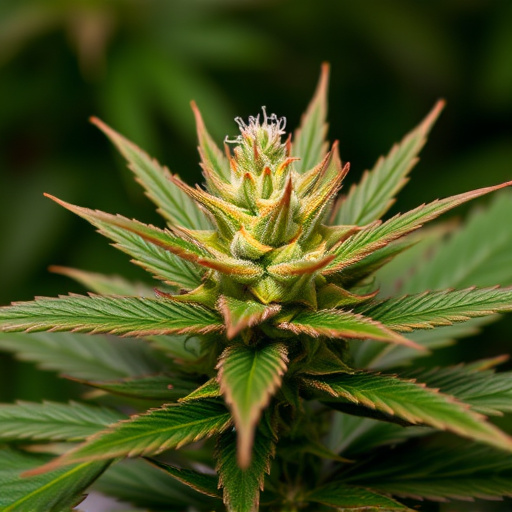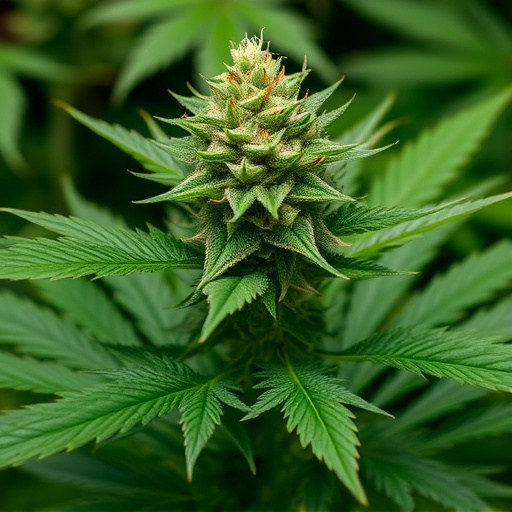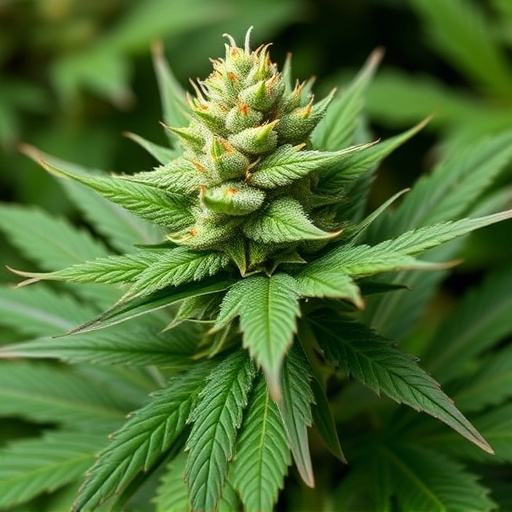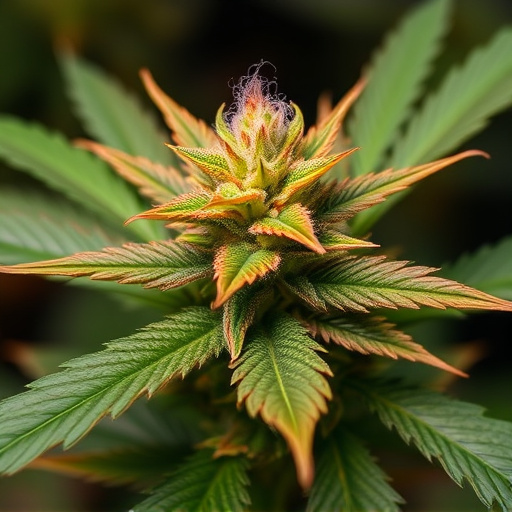THC in cannabis interacts with the body's endocannabinoid system, affecting hunger hormones leptin and ghrelin. This can lead to increased appetite, offering potential therapeutic benefits for conditions like anorexia. Understanding these interactions helps patients choose the best medical cannabis strains, which often contain high THC and CBD levels, along with specific terpene profiles like myrcene and linalool, to manage eating disorders and promote healthy weight. Consulting healthcare professionals is crucial for personalized guidance on the most effective best medical cannabis strains.
In today’s digital era, understanding the impact of THC on hunger hormones is more relevant than ever. This article explores how tetrahydrocannabinol (THC), the primary psychoactive compound in cannabis, interacts with our endocannabinoid system to influence appetite and eating behavior. By delving into the science behind leptin and ghrelin, the key hunger hormones, we uncover insights into how best medical cannabis strains can provide therapeutic benefits for various conditions.
- Understanding THC and Its Interaction with the Endocannabinoid System
- The Role of Hunger Hormones: Leptin and Ghrelin
- How Best Medical Cannabis Strains Can Influence Appetite and Eating Behavior
Understanding THC and Its Interaction with the Endocannabinoid System

THC, or tetrahydrocannabinol, is the primary psychoactive compound found in cannabis, responsible for its distinctive effects on the mind and body. It interacts with the endocannabinoid system (ECS), a complex network of receptors and neurotransmitters that play a crucial role in regulating various physiological processes, including appetite and hunger. The ECS is made up of three key components: endocannabinoids, which are produced naturally by the body; cannabinoid receptors located throughout the body, including the brain and digestive system; and enzymes that break down endocannabinoids.
When THC binds to cannabinoid receptors, particularly CB1 receptors in the brain, it can influence hunger hormones like leptin and ghrelin. Leptin signals satiety to the brain, while ghrelin stimulates appetite. Research suggests that THC may disrupt this balance, leading to increased appetite or a decreased sense of hunger, which is why many patients report elevated cravings for food when using medical cannabis strains known for their high THC content. Understanding these interactions offers insights into potential therapeutic applications in conditions like anorexia or weight loss associated with chronic illness, where stimulating appetite could be beneficial.
The Role of Hunger Hormones: Leptin and Ghrelin

The human body’s intricate system of hunger hormones plays a pivotal role in regulating appetite and food intake, ensuring we consume enough to sustain our bodies. Two key players in this dance are leptin and ghrelin. Leptin, often referred to as the ‘satiety hormone’, signals the brain to reduce appetite and promote feelings of fullness after a meal. This powerful hormone is released by fat cells, allowing your brain to track calorie intake and adjust eating behaviors accordingly. On the other hand, ghrelin, known as the ‘hunger hormone’, stimulates appetite and promotes food intake. It is primarily secreted in the stomach and releases when the body detects prolonged periods without food, sending signals to eat.
Understanding these hormonal dynamics is particularly relevant when exploring the effects of THC (tetrahydrocannabinol), a prominent compound found in best medical cannabis strains. Research suggests that THC can interact with both leptin and ghrelin, potentially altering their normal functions. This interaction may lead to changes in appetite, which is why some individuals experience increased hunger (or ‘the munchies’) after consuming cannabis, while others report decreased appetite. These effects could have implications for weight management and the potential use of medical cannabis as an aid for eating disorders or conditions like anorexia nervosa.
How Best Medical Cannabis Strains Can Influence Appetite and Eating Behavior

Medical cannabis has been studied for its potential to influence appetite and eating behavior, with certain strains showing promising results in managing conditions that affect nutrition. The best medical cannabis strains are those that contain high levels of tetrahydrocannabinol (THC) and other cannabinoids like cannabidiol (CBD). THC is known to interact with the endocannabinoid system, which plays a significant role in regulating appetite. Studies have shown that specific strains can stimulate hunger and enhance food intake, making them beneficial for patients suffering from conditions such as anorexia or cachexia, where appetite suppression is a major concern.
Best medical cannabis strains often possess unique profiles of terpenes, the aromatic compounds responsible for giving different strains their distinct smells and potential therapeutic effects. Certain terpenes like myrcene and linalool have been linked to appetite stimulation and stress relief. When combined with appropriate levels of THC and CBD, these strains can offer a gentle yet effective way to encourage eating and maintain a healthy diet. As always, consulting with a healthcare provider or qualified cannabis clinician is crucial to determine the most suitable best medical cannabis strain for individual needs.
THC’s impact on hunger hormones, particularly leptin and ghrelin, offers a compelling insight into how best medical cannabis strains can influence appetite and eating behavior. Understanding these interactions provides a foundation for exploring therapeutic applications in managing conditions characterized by dysregulated hunger, such as anorexia or cachexia. Further research into the complex relationship between THC, the endocannabinoid system, and hunger hormones holds promise for developing novel treatments that leverage the benefits of best medical cannabis strains to enhance quality of life for those in need.
